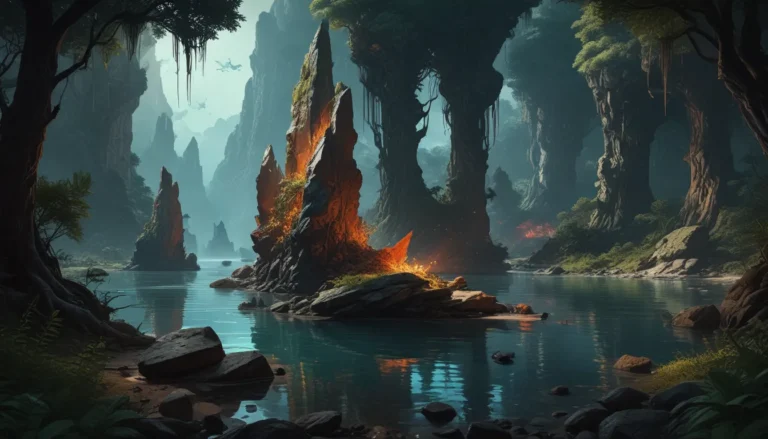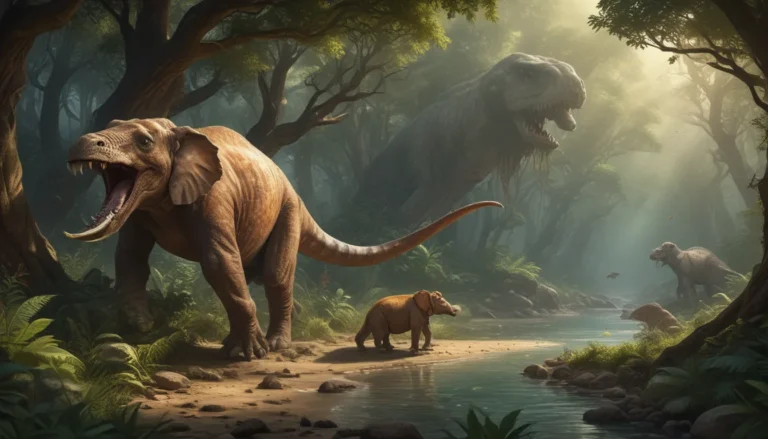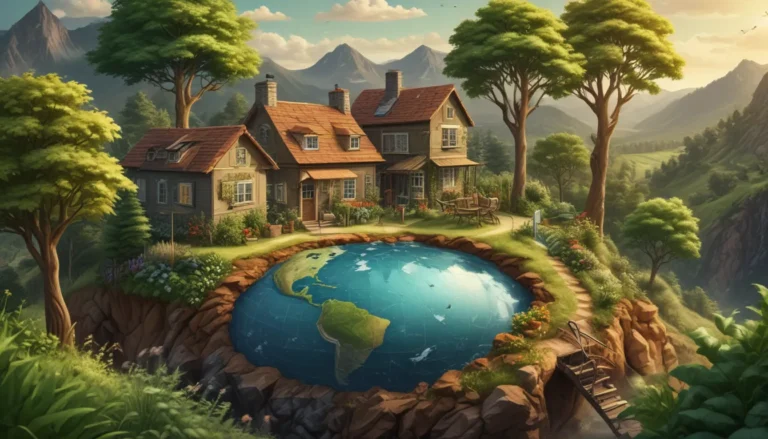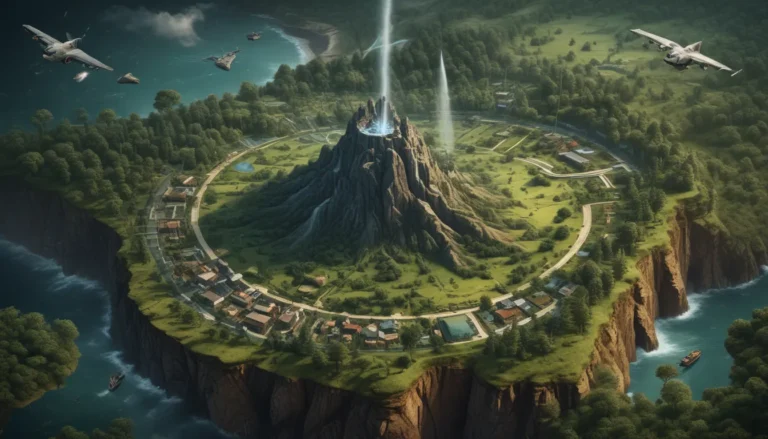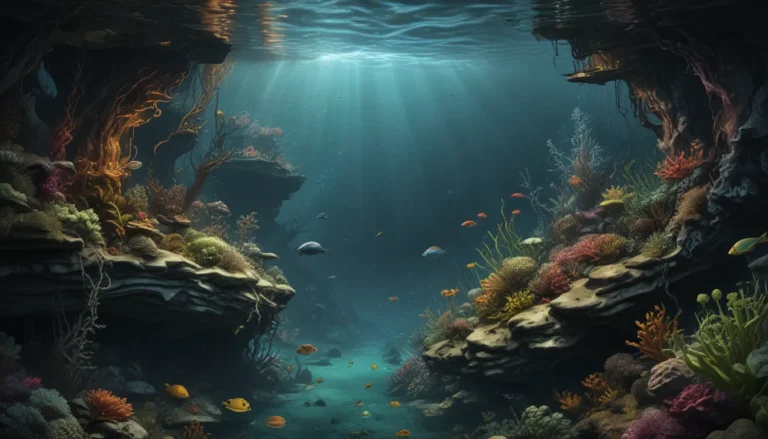A Note About Images: The images used in our articles are for illustration purposes only and may not exactly match the content. They are meant to engage readers, but the text should be relied upon for accurate information.
Are you ready to embark on a journey of exploration through the remarkable world of bioregions? These extraordinary geographical areas are not only defined by their unique ecological attributes but also by their rich cultural heritage. Join us as we uncover 10 astonishing facts about bioregions that will leave you in awe of the interconnectedness of our planet’s ecosystems.
Embracing the Harmony of Ecology and Culture
Bioregions are more than just geographical areas; they are living and breathing ecosystems that thrive on the delicate balance between nature and society. These regions transcend political borders, encouraging communities to come together in safeguarding and appreciating their shared environment. At the core of bioregionalism lies the fusion of indigenous wisdom and community engagement, paving the way for sustainable living practices that honor both the planet and its inhabitants.
Nurturing Sustainable Practices for a Greener Future
By celebrating the distinct ecological and cultural tapestry of each bioregion, communities are inspired to adopt sustainable lifestyles that preserve the natural resources and biodiversity within their midst. From promoting sustainable agriculture to embracing renewable energy sources, bioregions serve as catalysts for environmental stewardship and conscious living.
Thriving Beyond Boundaries: The Holistic Approach of Bioregions
Unlike conventional administrative divisions, bioregions are not confined by political demarcations but are rather shaped by the interconnected web of natural elements that define a region. This holistic perspective allows for a comprehensive approach to environmental management and conservation, uniting communities in a shared commitment to protecting the planet’s precious ecosystems.
Harnessing Ancient Wisdom for Modern Conservation Efforts
Indigenous communities have long been the custodians of their bioregional environments, drawing upon centuries-old knowledge to sustainably manage land and resources. This traditional wisdom offers valuable insights into biodiversity conservation, regenerative practices, and harmonious coexistence with nature, underscoring the crucial role of indigenous voices in the realm of bioregionalism.
Cultivating a Sense of Belonging and Stewardship
By embracing the unique ecological and cultural identity of a bioregion, individuals and communities forge deep-rooted connections to their surroundings, fostering a profound sense of place and responsibility. This intimate bond with the environment instills a reverence for nature and a collective desire to safeguard its intrinsic value for generations to come.
Empowering Communities through Self-Sufficiency and Resilience
Through strategic bioregional planning, communities are empowered to prioritize local resources, cultivate self-sustaining systems, and reduce reliance on external sources. By championing local agriculture, renewable energy initiatives, and decentralized economic activities, bioregionalism promotes self-sufficiency and resilience in the face of environmental challenges.
Safeguarding Biodiversity: A Shared Responsibility
The preservation of biodiversity lies at the heart of bioregional conservation efforts, ensuring the protection of diverse ecosystems within a region. By safeguarding species and habitats, bioregions maintain ecological balance, support ecosystem health, and secure the future of countless life forms that call these regions home.
Fostering Community Engagement for Sustainable Development
The collaborative spirit of bioregionalism hinges on active community involvement in shaping decisions related to land use, resource management, and environmental policies. This inclusive approach cultivates a sense of ownership and empowerment within communities, driving sustainable initiatives that are deeply rooted in local support and participation.
Building Bridges through Interdisciplinary Collaboration
Given the multifaceted nature of bioregions, addressing complex environmental and social challenges requires interdisciplinary collaboration. Bioregionalism serves as a platform for scientists, policymakers, community leaders, and indigenous knowledge holders to come together in crafting holistic solutions for sustainable development and environmental conservation.
Embracing Change: The Dynamic Nature of Bioregions
Bioregions are dynamic entities that constantly evolve in response to natural and human-induced influences. Recognizing the ever-changing landscape of bioregions enables the implementation of adaptive management strategies that adjust to emerging ecological, social, and economic realities, ensuring the long-term sustainability of these vital ecosystems.
In closing, the concept of bioregion illuminates the intricate tapestry of connections between ecology, culture, and sustainability. By honoring and understanding the unique attributes of each bioregion, communities can forge a harmonious relationship with their environment, nurturing a legacy of conservation and appreciation for the wonders of the natural world.
Frequently Asked Questions
- What defines a bioregion?
-
A bioregion is a geographical area characterized by its distinct climate, topography, flora, and fauna, encompassing a network of interconnected ecosystems.
-
How do bioregions differ from ecosystems?
-
While ecosystems focus on specific habitats, bioregions encompass broader geographic regions and consider the environmental factors shaping ecosystem dynamics within them.
-
Can you provide examples of bioregions?
-
Notable bioregions include the Amazon Rainforest, the Great Barrier Reef, the Serengeti, and the Arctic Tundra, each renowned for their unique ecological features and biodiversity.
-
What benefits do bioregions offer?
-
Bioregions provide essential ecosystem services such as clean air, water regulation, food production, and cultural significance, as well as opportunities for recreation, education, and scientific research.
-
What are the threats facing bioregions?
-
Major threats to bioregions include deforestation, habitat destruction, pollution, climate change, and invasive species, posing risks to biodiversity and ecosystem stability.
-
How can we protect and preserve bioregions?
-
Protecting bioregions involves promoting sustainable practices, supporting conservation initiatives, and advocating for responsible land management policies to mitigate threats and promote conservation efforts.
-
How can individuals contribute to bioregion conservation?
-
Individuals can make a difference through eco-friendly behaviors, supporting local conservation organizations, volunteering, and raising awareness about the importance of bioregions in safeguarding biodiversity.
-
Can tourism coexist with bioregion conservation?
-
Responsible tourism practices can align with bioregion conservation by minimizing environmental impacts, supporting local communities, and contributing to the economic viability and protection of bioregions.
-
Are there regulations in place to protect bioregions?
-
Many countries have established protected areas like national parks and reserves to safeguard bioregions, while international agreements aim to uphold biodiversity conservation and sustainable use practices worldwide.
-
Why should we value bioregions?
- Bioregions are crucial for planetary health, providing essential ecosystem services, supporting biodiversity, and offering awe-inspiring natural beauty. Preserving bioregions ensures a sustainable future for all life on Earth.
Our dedication to delivering trustworthy and engaging content is unwavering, with each fact sourced directly from our diverse community of contributors. Trust in our commitment to quality and authenticity as you explore the wonders of bioregions and join us in celebrating the beauty and resilience of our planet’s natural heritage.

